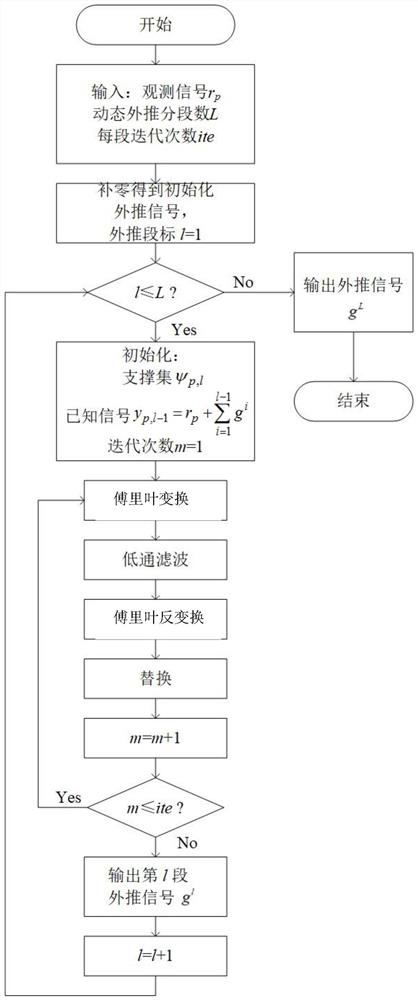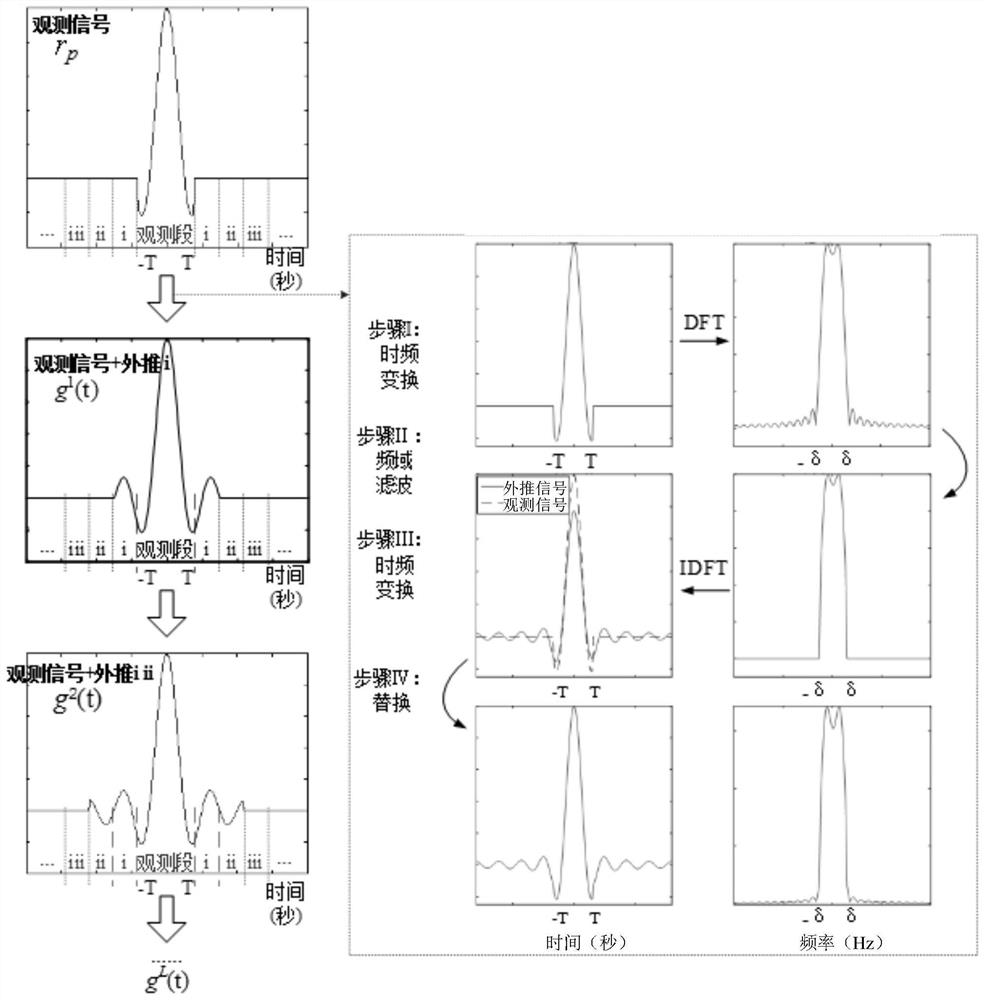A Dynamic Extrapolation Method for Bandwidth-Limited Signals
A bandwidth-limited, push method technology, applied in the field of signal processing, can solve problems such as low reliability and low efficiency, and achieve the effects of improving reliability, improving effectiveness, and reducing normalized mean square error
- Summary
- Abstract
- Description
- Claims
- Application Information
AI Technical Summary
Problems solved by technology
Method used
Image
Examples
specific Embodiment approach 1
[0019] Specific embodiment one: a kind of OFDM transmission method of frequency offset described in this embodiment, take the sinc signal as an example (this signal is a frequency-domain band-limited signal), according to the dynamic extrapolation process of the time-domain observation signal, the method Include the following steps:
[0020] Step 1. According to the compression ratio α, the observed signal r p Pad zero to the length of the original signal, use the zero padding area as the area to be extrapolated, and averagely segment the area to be extrapolated, and number each segment of the signal as 1, 2 in order of distance from the observation position from near to far ,...,L;
[0021] Step 2. Initialize the signals of each segment respectively, and obtain the initialization extrapolation signal of the first segment signal and the support set ψ of the first segment signal p,l , l=1,2,...,L;
[0022] Step 3: Dynamic iterative extrapolation is performed on the initial e...
specific Embodiment approach 2
[0025] Specific implementation mode two: as figure 1 , figure 2 and image 3 As shown, the difference between this embodiment and the first embodiment is that the specific process of the third step is:
[0026] Step 31. Set the maximum number of iterations of dynamic iterative extrapolation to ite according to the amount of calculation or performance required by the system, and the initial extrapolation signal of the l-section signal to be y p,l-1 ;
[0027] Step 32. In the first iteration, for y p,l-1 Perform discrete Fourier transform to obtain the frequency domain signal Y p,l-1 ;
[0028] Step 33, the frequency domain signal Y p,l-1 Through iterative filter H d , to obtain the filtered signal
[0029] Step three and four, the filtered signal Perform an inverse discrete Fourier transform to obtain a mapped signal in the time domain
[0030] Step three and five, use the mapping signal not in the support set ψ p,l part of y p,l-1 Substitution is performed ...
specific Embodiment approach 3
[0038] Specific implementation mode three: the difference between this implementation mode and specific implementation mode two is: the specific process of described steps three and five is:
[0039]
[0040] Among them: k stands for discrete signal The kth point in , represent a discrete signal The value of the kth point in y p,l-1 (k) represents the signal y p,l-1 The value of the kth point in (k), representative signal The value of the kth point in .
[0041] Then for the second iteration:
[0042]
[0043] in: represents the mapped signal in the time domain obtained in the second iteration.
PUM
 Login to View More
Login to View More Abstract
Description
Claims
Application Information
 Login to View More
Login to View More - R&D
- Intellectual Property
- Life Sciences
- Materials
- Tech Scout
- Unparalleled Data Quality
- Higher Quality Content
- 60% Fewer Hallucinations
Browse by: Latest US Patents, China's latest patents, Technical Efficacy Thesaurus, Application Domain, Technology Topic, Popular Technical Reports.
© 2025 PatSnap. All rights reserved.Legal|Privacy policy|Modern Slavery Act Transparency Statement|Sitemap|About US| Contact US: help@patsnap.com



